Presentation
Speakers
- Dusty Holcombe, Deputy Director of the Office of Transportation Public Private Partnerships for the Commonwealth of Virginia
- Matthew (Matt) E. MacGregor, P.E., Texas DOT Dallas-Fort Worth Strategic Projects Office - Procurement.
- Leon Corbett, Project Finance Manager, Florida Department of Transportation
- Paul Lampley, I-595 Construction Project Manager, Florida Department of Transportation
- Brett Jackson, Major Projects Coordinator and Locally Administered Projects Program Manager, FHWA Texas Division.
- Anita N. Wilson, Urban Program Engineer, FHWA Texas Division
- Patrick Decorla-Souza, FHWA P3 Program Manager
Introduction
- Patrick Decorla-Souza, FHWA P3 Program Manager
General / Outreach & Communication
- Paul Lampley, I-595 Construction Project Manager, Florida Department of Transportation
- Leon Corbett, Project Finance Manager, Florida Department of Transportation
- Matthew (Matt) E. MacGregor, P.E., Texas DOT Dallas-Fort Worth Strategic Projects Office - Procurement.
- Virginia DOT Perspective
Tolling & Management Lanes
- Matthew (Matt) E. MacGregor, P.E., Texas DOT Dallas-Fort Worth Strategic Projects Office - Procurement.
Contract Performance
- Dusty Holcombe, Deputy Director of the Office of Transportation Public Private Partnerships for the Commonwealth of Virginia
Federal Requirements
- Anita N. Wilson, Urban Program Engineer, FHWA Texas Division
- Brett Jackson, Major Projects Coordinator and Locally Administered Projects Program Manager, FHWA Texas Division.
Texas DOT Public Information Presentation (Supplementary Material)
- Selma Stockstill, Texas DOT
- Tony Hartzel, Texas DOT
- Jodi Hodges, Texas DOT
 Advanced P3 Training Case Study: Colorado
Advanced P3 Training Case Study: Colorado
April 25, 2012
An Advanced Webinar - Building Upon P3 101
- Topic areas focusing on lessons learned :
- General / Outreach & Communications (FDOT)
- Tolling and Managed Lanes (TxDOT)
- Contract Performance (VDOT)
- Federal Requirements (FHWA - Texas Division)
General / Outreach & Communication
Florida DOT
Paul Lampley
Leon Corbett
- Key Questions
- What are the essential ingredients for a successful partnership?
- How do other DOTs deal with the substantial pre-development cost of P3s?
- What successful examples are there about DOT public outreach and communications regarding P3s?
 Florida Department of Transportation
Florida Department of Transportation
I-595 Express Corridor Improvements Project
Paul A. Lampley, P.E. / I-595 Project Manager
Leon Corbett / FDOT Project Finance Manager
Outline
- I-595 DBFOM Overview
- Pre-development Costs of P3s
- Building a Long Term Partnership
- Successful P3 Outreach
PROJECT DESCRIPTION
- $1.8 Billion, 35-year Concession Agreement (DBFOM)
- 5 year design/construction period, 35 year operations/maintenance period
- 13 mile corridor (10.5 miles on I-595, 2.5 miles on Florida's Turnpike)
- Availability Payments
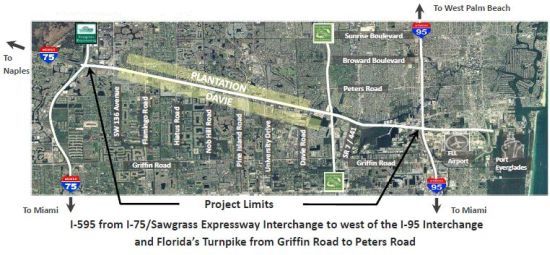
PRE-DEVELOPMENT COST OF P3S
- Costs Programmed by FDOT
- Planning
- NEPA
- Known Right Of Way Needs
- Expertise to Team (Consultants)
- Design Team (RS&H)
- Financial/ Technical Team (Jeffery Parker & Assoc.)
- Toll and Revenue Team (WSA)
- Procurement Team (Nossaman LLP)
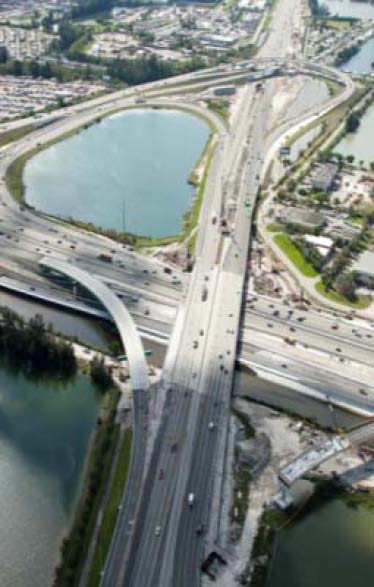 Research
Research
- Meet with Industry Representatives
- Research similar projects worldwide
- Costs Transferred to the Concessionaire
- Any Additional Right of Way
- Utility Relocations
- Clean up of Contamination
- Operations and Maintenance
LONG TERM PARTNERSHIPS
- A successful partnership isn't developed over night or with the signing of a contract but is a process that requires Respect, a level of Trust, and Fairness
- Each party must have Mutual project goals and Support from the highest level
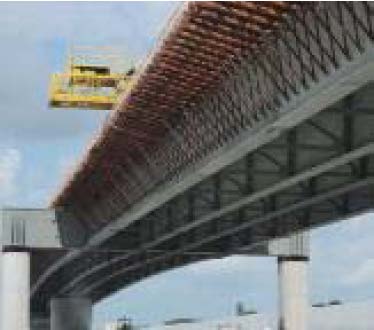 The owner can assist in key areas by:
The owner can assist in key areas by:
- Developing and publishing a business plan with measurable results
- Coordinating with elected officials, local governments, and resource and regulatory agencies
- Coordinating internally to modify internal policies, procedures and processes to facilitate a P3
- Remaining open and flexible as well as clear, consistent, and persistent
- Being proactive and transparent
- Assisting the team through workshops to find mutually acceptable solutions
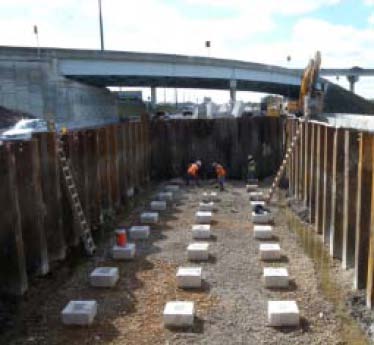
P3 OUTREACH - STATE GOVERNMENT
- Statutory authority and controls are key to a successful P3 program
- Section 334.30, Florida Statutes
- 15% cap
- Cost effectiveness evaluation
- Stakeholder education is a continuous process
- Provide program summaries and updates
GENERATING LOCAL SUPPORT FOR A P3
- Pre Construction
- One-on-One Meetings with ALL Elected Officials
- Individual Neighborhood Meetings & Noise Workshops
- Project Open Houses and Groundbreaking
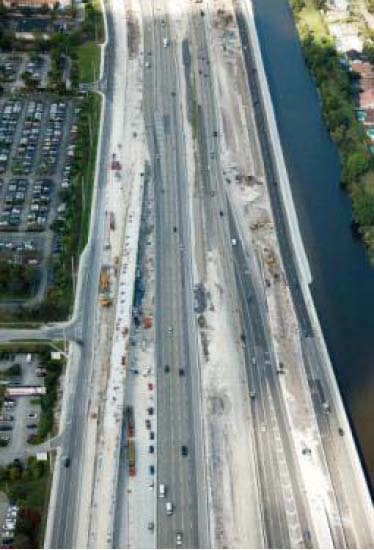 During Construction
During Construction
- Project Logos and branding lets local business owners know who their customers are
- Frequent Project Updates at Established Meetings
- Homeowners' Associations, Civic Associations, Chambers of Commerce, Municipal Agencies, Schools
- Corridor Advisory Committee
- Social Media
- Twitter, Facebook, e-Newsletters, FDOT Website (Google Earth), Concessionaire Website
- A Successful Partnership Includes the Public Involvement Team
- Public Involvement Representatives for both Owner and Concessionaire
- Clear, consistent and proactive messaging is key
- Use Outreach Strategies from Planning and PD&E during Construction
- Build Mutually Beneficial Relationships with Local Media
- Share your news- good and otherwise
- Focus on Local Messages
- Creating local jobs
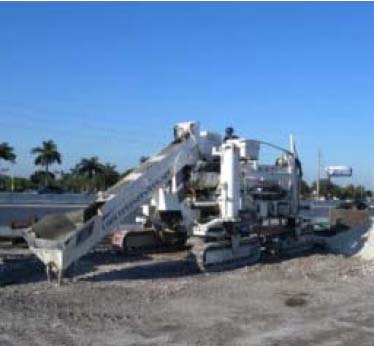 Stimulating the local economy with project team patronage
Stimulating the local economy with project team patronage- Providing Noise Abatement
- Expediting Construction
- Realizing overall Cost Savings
- What's Good for the Community is Good for the Partnership
- Disadvantaged Business Enterprise (DBR) Registration
- Contractors' Breakfast
- Charitable Programs / Giving
- Volunteering in Neighborhood Activities
P3 BENEFITS/CHALLENGES
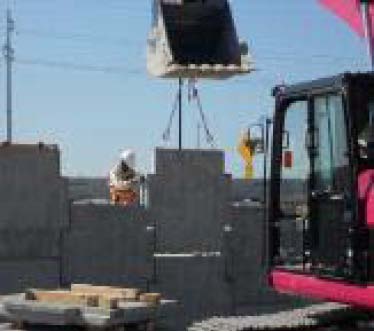 Benefits:
Benefits:
- Public can utilize the facility sooner than later
- Economy of scale and price stability
- Mechanism to fill funding shortfall
- Private equity
- Global capital markets
- Outside engineering and management expertise
- Risk Transfer
- Challenges:
- Perceived loss of control
- "Cherry picking" by private sector
- Owner learning curve
- "Real" transfer of risk will cost REAL money
www.I-595.com
General / Outreach & Communication
Texas DOT & Virginia DOT Perspective
Texas Experience Matt MacGregor
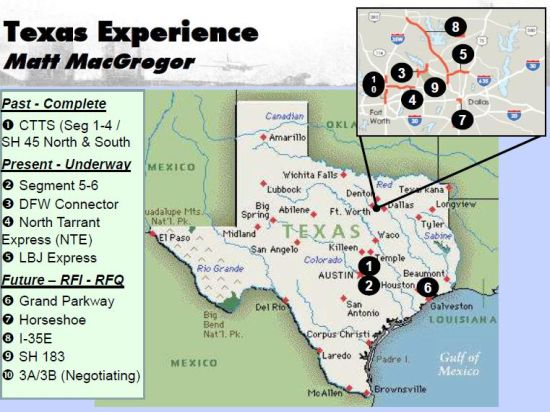
Past - Complete
- CTTS (Seg 1-4 / SH 45 North & South
Present - Underway
- Segment 5-6
- DFW Connector
- North Tarrant Express (NTE)
- LBJ Express
Future - RFI - RFQ
- Grand Parkway
- Horseshoe
- I-35E
- SH 183
- 3A/3B (Negotiating)
Texas Perspective
- Pre-development Costs of P3s
- Owner has to bear most of these costs
- Building a Long Term Partnership
- Working on it - Have a similar partner
- Successful P3 Outreach
Public Involvement in Texas: Lessons
- PI efforts on DB projects go beyond typical TxDOT practice
- $1B project needs own PI staff to focus on stakeholder needs
- Project website and constant stakeholder contact is paramount
- Things change too quickly for conventional methods on events such as traffic switches
- A good contract is good for everyone - expectations established
- PICP
- Crisis Communications
- Outreach plans
- Events
- Be prepared to adapt
- Lane closure format on website has changed three times or more in 18 months
- Having a good partnering attitude benefits everyone
- Storefront
- Speed limit/ work zone safety
Entire Presentation has been included
Questions
Submit a question using the chat box or dial *1 to call in your question by phone


Tolling and Managed Lanes
Texas DOT
Matt MacGregor
- Key Questions
- Are the same policies (e.g., toll policies) that govern DOT-operated projects also applicable to P3-operated projects?
- Are there any good examples of revenue sharing P3 projects?
- What are lessons learned (good and bad) from other P3 managed lanes facilities?
- Are the same policies (e.g., toll policies) that govern DOT-operated projects also applicable to P3-operated projects?
- This is our challenge in North Texas - Preferred from a customer delivery standpoint. May be some cost savings on DOT projects - See slide for overview
- Are there any good examples of revenue sharing P3 projects?
- We have an example we have included for two managed lane projects and one toll road project - See slide for a graphical look
- What are lessons learned (good and bad) from other P3 managed lanes facilities?
- Toll Servicing Agreements, Transaction Costs, Interoperability and many more topics need to be discussed early and often
Many P3 Projects in Texas

Past - Complete
- CTTS (Seg 1-4 / SH 45 North & South
Present - Underway
- Segment 5-6
- DFW Connector
- North Tarrant Express (NTE)
- LBJ Express
Future - RFI - RFQ
- Grand Parkway
- Horseshoe
- I-35E
- SH 183
- 3A/3B (Negotiating)
Operations, Signage, Toll and Managed Lane Pricing Policies Should be Similar
- Provide statewide consistency which permits some regional customization
- DFW, Houston, Austin and El Paso are actively operating/developing managed lanes and toll road facilities.
- The DFW area will have P3 managed lanes, Public operated managed lanes and an existing HOV System that is likely to be priced
- A driver may use one or more of these facilities in their daily commute
- Simplification and uniformity are a primary consideration - A work in progress
- Priced projects are required to be tied to goals, performance goals, measurement, monitoring and reporting programs - i.e. ELDP Program
Managed Lane Operating Strategies Versus Objectives
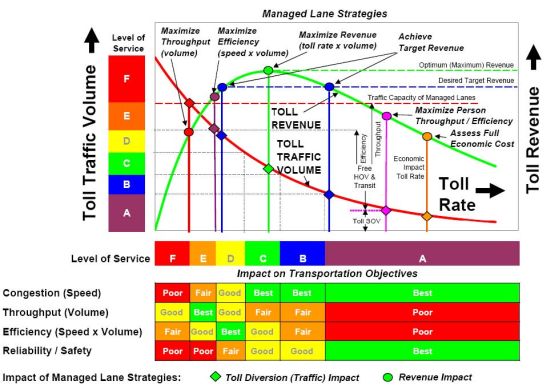
Revenue Sharing
- Included in both of our current P3 managed lanes projects - LBJ Express and NTE
- Included in our Segment 5-6 toll road project in a similar manner
- Public-Public Partnerships can also include revenue sharing - i.e. Eastern Extension of PGBT is set at 80% to NTTA, and 20% to TxDOT of the gross toll
Revenue Sharing What does it mean?
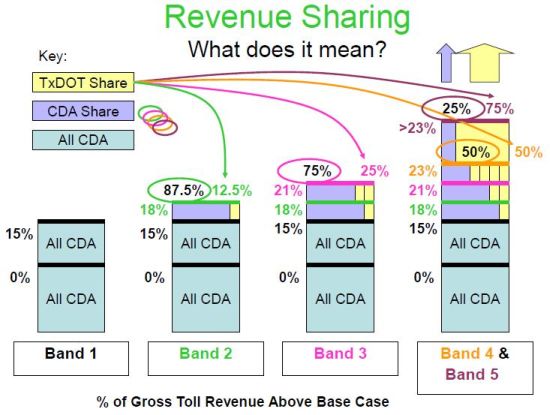
Tolls, Transaction Costs & Interoperability Fees What is it all about and how does it work?
![MCj04149760000[1]](/ipd/images/p3/advanced_p3/img_102.jpg)
Tolling & Managed Lanes
Florida DOT & Virginia DOT Perspective
Questions
Submit a question using the chat box or dial *1 to call in your question by phone


Contract Performance
Virginia DOT
Dusty Holcombe
Contract Performance
- Key Questions
- How do other DOTs deal with maintenance responsibilities on P3 concessions?
- Are there any examples of a DOT requiring that it provide maintenance services (for a price) to a P3 concessionaire?
- How do other states handle maintenance, etc., when some lanes in the facility are owned by the DOT and other lanes are owned by a P3?
- How is construction oversight handled when multiple owners are involved?
- If the concessionaire is not profitable and hands the facility back in a few years are there changes in the way the state oversees the construction? Other things done differently if this is a possibility?
Key Questions
- Contract Performance - OTP3 - Virginia
- How do other DOTs deal with maintenance responsibilities on P3 concessions?
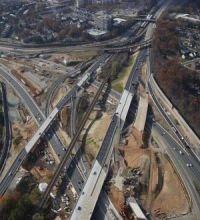 Scope
Scope
- Brownfield v. Greenfield
- Adjacent Facilities
- Risk
- Best able to manage
- Cost - Value for Money
- Performance Regime
- Technical Requirements
- Non-compliance Points
- Contract Performance - OTP3 - Virginia
- Are there any examples of a DOT requiring that it provide maintenance services (for a price) to a P3 concessionaire?
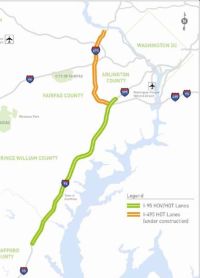 Snow/Ice Removal
Snow/Ice Removal- Bridge Inspection
- Shared Facilities
- Bridges
- Lighting
- Barriers
- Tolling - Backroom/E-Z Pass
- Virginia State Police
- Visual Enforcement
- Incident Response
- Drainage
- Contract Performance - OTP3 - Virginia
- How do other states handle maintenance, etc., when some lanes in the facility are owned by the DOT and other lanes are owned by a P3?
 Prior to Procurement
Prior to Procurement
- Memorandum of Agreement - Responsible Public Entity
- Roles and Responsibilities
- Identification of Assets
- Contract Documents
- Comprehensive Agreements
- Technical Requirements
- Contract Performance - OTP3 - Virginia
- How is construction oversight handled when multiple owners are involved?
 Owner's Oversight Plan
Owner's Oversight Plan
- Project Development Plans
- QAQC Plan
- Performance Requirements
- Handback Requirements
- Conflicting Interests?
- Who is taking Long-Term O&M Risk?
- DB Contractor v. Operator
- Contract Performance - OTP3 - Virginia
 If the concessionaire is not profitable and hands the facility back in a few years are there changes in the way the state oversees the construction? Other things done differently if this is a possibility?
If the concessionaire is not profitable and hands the facility back in a few years are there changes in the way the state oversees the construction? Other things done differently if this is a possibility?
- Plan to Succeed, Prepare for Other Events
- Project Development
- Contract Documents
- Contract Administration
Contract Performance
Florida DOT & Texas DOT Perspective
Key Questions - Texas Perspective
- Contract Performance
- How does TxDOT deal with maintenance responsibilities on P3 concessions?
- Developer is responsible through the term and it includes hand back requirements
- Are there any examples in Texas of requiring that it provide maintenance services (for a price) to a P3 concessionaire?
- Not in Texas yet; over time there may opportunities for this to occur
- How does Texas handle maintenance, etc., when some lanes in the facility are owned by TxDOT and the Managed Lanes are "leased" by a P3?
- Developer maintains the toll/managed lanes; yet to be seen how well it works
- Segment 5-6 will be the first attempt at this being done on a completed project
- How is construction oversight handled when multiple owners are involved?
- Through agreements with those owners
- If the concessionaire is not profitable and hands the facility back in a few years are there changes in the way the state oversees the construction? Other things done differently if this is a possibility?
- Hope we don't have to find out; we anticipate similar transitions as traditional projects just larger in scale and magnitude
Questions
Submit a question using the chat box Or Dial *1 to call in your question by phone


Federal Requirements
FHWA - Texas Division
Federal Requirements
- Key Questions
- What Federal requirements apply?
- What are state DOT's experiences in attempting to meet those requirements?
Texas Division - Federal Requirements and Oversight for P3 Projects
- TX Experience
- Contracting Methods Used to Date
- Design-bid-build
- Design-build
- Design-build with capital maintenance agreements
- DBFOM (P3 or Comprehensive Development Agreements)
- Unsolicited/Solicited Proposals
- Any and all funding mechanisms have been used to date.
Texas Division P3
- Project Examples
- SH 130 D-B with maintenance agreement ($1.4 billion 50 mile toll road new alignment with TIFIA assistance)
- SH 130 extension using P3 with TIFIA assistance ($1.1 billion toll road, 40 miles new alignment)
- NTE and LBJ P3s with TIFIA assistance ($2.5 billion and $2 billion, 12 and 13 miles respectively)
- DFW Connector, D-B with maintenance agreement ($1.2 billion, 4 major interchanges)
- 183A, D-B with TIFIA ($320 million new alignment toll road)
Texas Division P3 - Tools for Your Use
- Developed a draft SOP for P3 and D-B
- Generally follows 23 CFR 636
- Provides direction for new staff or inexperienced in P3 and or D-B
- Project Specific Oversight Agreements between the State and FHWA
- Major Projects SOP
Texas Division P3 - Lessons Learned
- Areas of focus and lessons learned
- Pay attention to conflicts of interest and firewalls on various teams
- FHWA involvement requires intensive reading and meetings during the procurement process
- Be involved early and often in developing schedules as assumptions are often made for State and Federal involvement, review times, approval actions, etc.
- Advise against Tiered environmental process
Texas Division P3
- Lessons learned continued
- Process is much easier when NEPA is completed, but State tends to push the envelope with parallel processes (again, schedule)
- Quality Assurance Programs
- State is pushing the envelope in being less involved and providing less oversight by using an independent engineer and allowing for contractor acceptance testing
- Establish dispute resolution process early and follow it
- Any deviations from 23 CFR 637 must be approved by DO
Texas Division P3
- Noticing a trend of "downsizing" of projects due to funding shortfalls -- this brings purpose and need into question
- Timing of deliverables such as Toll agreements, Financial Plans, Project Management Plans, TIFIA loan execution, etc.
- Public involvement and education on the P3 process is PARAMOUNT
FHWA Division Office "Top Requirements Concerns"
- The use of contractor's test results for materials acceptance on P3 projects and what that means with respect to a QAP in accordance with 23 CFR 637B
- If a project has Federal monies or a Federal nexus such as work on the Interstate, then it is a "Federal" project and all requirements apply just as with a Design-bid-build project
Regulatory Concerns Continued
- Value Engineering must be performed prior to the final request for proposals - 23 CFR 627.9(c)
- Major Projects Requirements
- Financial Plan
- Major Project Plan
- Cost Estimate Review
- Contact:
Federal Requirements
Florida DOT, Texas DOT, Virginia DOT Perspective
Questions
Submit a question using the chat box Or Dial *1 to call in your question by phone


 Advanced P3 Training Case Study: Colorado
Advanced P3 Training Case Study: Colorado  Florida Department of Transportation
Florida Department of Transportation
 Research
Research
 The owner can assist in key areas by:
The owner can assist in key areas by:

 During Construction
During Construction
 Stimulating the local economy with project team patronage
Stimulating the local economy with project team patronage Benefits:
Benefits:






![MCj04149760000[1]](/ipd/images/p3/advanced_p3/img_102.jpg)


 Scope
Scope
 Snow/Ice Removal
Snow/Ice Removal Prior to Procurement
Prior to Procurement
 Owner's Oversight Plan
Owner's Oversight Plan
 If the concessionaire is not profitable and hands the facility back in a few years are there changes in the way the state oversees the construction? Other things done differently if this is a possibility?
If the concessionaire is not profitable and hands the facility back in a few years are there changes in the way the state oversees the construction? Other things done differently if this is a possibility?



